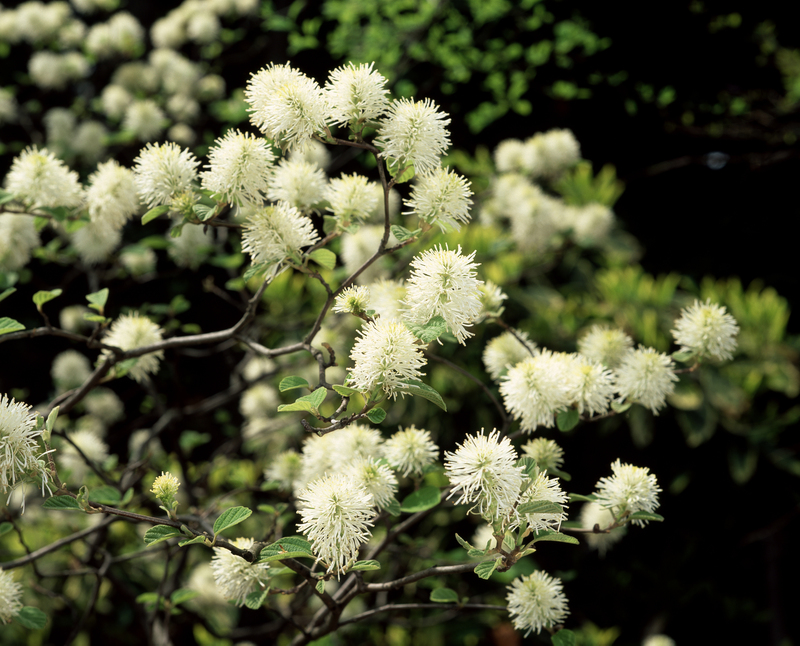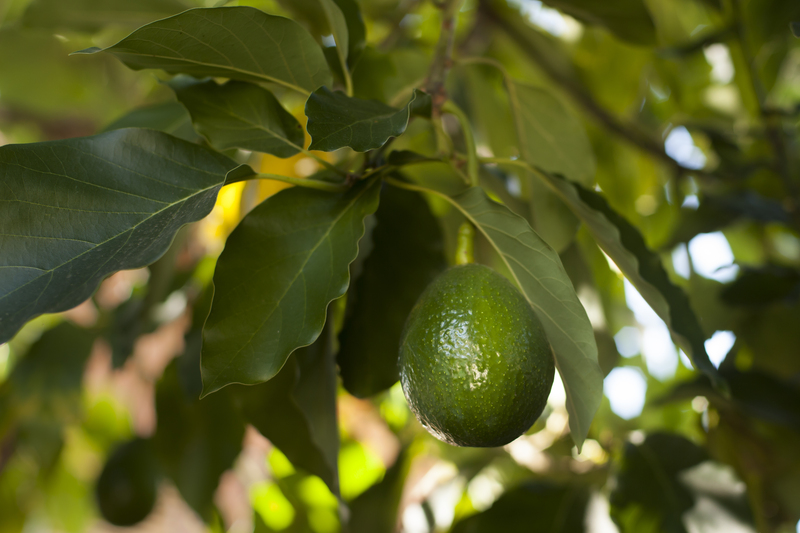Creating a Harmonious Outdoor Space: Gardening Strategies for Dog Owners
Posted on 24/05/2025
Creating a Harmonious Outdoor Space: Gardening Strategies for Dog Owners
Owning a dog brings immeasurable joy and companionship, but it also presents unique challenges--especially when it comes to designing a thriving garden. Many dog owners dream of a lush, inviting yard without constant worry about trampled flower beds, yellowed patches in the grass, or exposure to potentially toxic plants. The good news? With the right gardening strategies for dog owners, it's possible to have a vibrant outdoor space that satisfies both humans and their furry companions!
Understanding Your Dog's Outdoor Behavior
Before you begin transforming your yard, observe and understand your dog's habits. Some dogs love digging, others enjoy running in circles, and some are content to nap in the sun. By tailoring your design to your pet's activities, you can minimize frustration and maximize both your garden's beauty and your pup's happiness.
- Pathways: Dogs often create their own trails. Rather than fighting these natural routes, consider incorporating durable corridors into your design.
- Resting Spots: Provide shady and comfortable places where your dog can relax and watch the world go by.
- Play Zones: Designate a specific area for play and training to concentrate wear and tear.

Pet-Friendly Plant Choices: What to Grow and What to Avoid
Some plants, while beautiful, can be toxic to dogs, causing anything from mild skin irritation to severe illness. When curating your garden, prioritize dog-safe botanicals.
Safe Plant Options for Dogs
- Marigolds (Tagetes): Bright, cheerful, and non-toxic.
- Roses: Classic choice; just ensure thorns are out of reach of playful pups.
- Sunflowers: Hardy and pet-safe blooms that also attract pollinators.
- Cornflowers: These blue beauties are gentle on pets.
- Camellias: Gorgeous, evergreen shrubs that are safe around dogs.
Plants to Avoid in a Dog-Friendly Garden
- Azaleas and Rhododendrons: Can cause vomiting, diarrhea, and even heart failure in pets.
- Tulips and Daffodils: Bulbs are highly toxic if ingested.
- Oleander: All parts are poisonous to dogs and humans alike.
- Sago Palm: Severely toxic, leading to liver failure.
- Foxglove: Even small amounts can be fatal for dogs.
If you're unsure about a specific plant, reference the ASPCA's comprehensive plant guide for pet-safe gardening.
Durable Hardscaping Solutions for Dog Owners
Functional landscaping is key in any dog-friendly garden. Dogs--big and small--can be tough on lawns, paths, and fences. Choosing robust materials that stand up to claws, digging, and the occasional accident will save time and money in the long run.
Best Groundcovers for Active Dogs
- Clover: More durable than grass and resistant to urine spotting.
- Artificial turf: Looks natural, easy to clean, and perfect for contained play areas.
- Creeping thyme: Dense, fragrant, and can withstand moderate foot (and paw) traffic.
- Bark mulch: Gentle for paws but avoid cocoa mulch, which is toxic to dogs.
Path Materials That Last
- Flagstone or Slate: Flat, nonslip surfaces are gentle on paws and durable against rough play.
- Gravel: Opt for pea gravel, which is less likely to get stuck between toes.
- Concrete or Brick: Ideal for well-trodden pathways and easy to hose down.
Fencing for Safety and Harmony
A sturdy fence not only keeps your dog secure but also defines the boundaries of your lush outdoor escape. Height, material, and style should all reflect your dog's breed, size, and temperament.
Smart Fencing Tips
- Height Matters: For jumpers, fences should be at least 6 feet tall.
- Digging Solutions: Extend fencing underground or use hardscape borders to prevent escapes.
- Window Panels: Give curious dogs a spot to peek out, reducing barking from boredom.
- Secure Gates: Use double latches if your dog is especially determined.
Addressing Common Lawn and Garden Issues for Dog Owners
Even with thoughtful design, dog ownership brings specific lawn care and maintenance hurdles. Understanding these challenges--and adopting smart strategies--will help keep your shared space flourishing.
Dealing with Dog Urine Patches
Dog urine is rich in nitrogen, which can burn grass and leave unsightly yellow spots. Below are practical tips to prevent and repair damage:
- Encourage Hydration: Well-hydrated dogs produce less concentrated urine, reducing lawn burn.
- Select Hardy Grass Varieties: Ryegrass and fescues tend to be more resilient.
- Hose Down ASAP: Watering spots immediately after your dog urinates dilutes nitrogen levels.
- Train Your Dog: Create a designated potty area using gravel or mulch for easier cleanup and less damage.
Minimizing Digging Behavior
Digging is a natural instinct for many dogs--but it needn't spell disaster for your plants. Try these strategies:
- Provide a Dig Pit: Fill a sandbox with soft earth and bury toys occasionally to encourage use.
- Reinforce Borders: Use stones or heavy timber to protect beds.
- Engage Your Dog: Plenty of playtime and puzzles reduce boredom digging.
- Use Natural Deterrents: Sprinkling citrus peels or commercial dog-repellent sprays on vulnerable areas can help.
Designing for Function and Delight: Must-Have Features in a Dog-Friendly Garden
Shady Spaces and Hideaways
Just like people, dogs need respite from the sun. Incorporate shady trees, pergolas, or strategically placed umbrellas. Consider raised beds or dog houses for extra comfort. If your garden receives full sun, plant fast-growing shrubs or place a tarp until tree cover matures.
Water Features for Play and Cooling Off
- Kiddie Pools: Great for pups who love to splash.
- Shallow Fountains: Make sure water features are clean, steady, and not too deep.
- Automatic Waterers: Always provide fresh drinking water outside on warm days.
Toys, Trails, and Enrichment
Keep your pup physically and mentally engaged with built-in agility courses, tunnels, logs for climbing, or interactive toys scattered throughout the landscape. Paths winding through the garden offer adventure--and help guide canine traffic away from delicate flowers.
Low-Maintenance Gardening Tips for Busy Dog Owners
A dog-friendly yard doesn't have to mean endless work. With efficient planting and smart landscaping, you can reduce chores while maximizing enjoyment for all.
- Choose Native Plants: They're naturally pest- and drought-resistant, requiring less attention.
- Use Raised Beds: Protects sensitive plant roots from trampling and digging.
- Mulch Generously: Reduces weeds and keeps soil moist (avoid cocoa mulch).
- Install Drip Irrigation: Saves water and allows leaves to stay dry, lowering disease risk.
- Schedule Regular Walks: Daily exercise means less pent-up energy unleashed on your garden.
Training Your Dog for Garden Etiquette
Training is the cornerstone of a harmonious outdoor environment. Gentle boundaries teach your dog where they can (and cannot) play, dig, or relieve themselves.
Tips for Teaching Garden Manners
- Start Early: Teach boundaries with positive reinforcement as soon as possible.
- Praise and Reward: Consistently reward your dog for following the rules.
- Use Visual Markers: Rocks or low fencing help dogs learn where to stay.
- Supervise at First: Redirect unwanted behavior gently to the correct zones.
Remember, patience is key. With time, most dogs will adapt beautifully to a yard designed just for them.
Responsible Pest and Weed Control in Pet-Centric Gardens
Standard pesticides and herbicides can endanger your pets. Instead, select safe alternatives:
- Hand-pull Weeds or use boiling water for spot-killing.
- Apply Corn Gluten Meal: It acts as a natural pre-emergent herbicide.
- Encourage Beneficial Insects like ladybugs to control pests naturally.
- Opt for Neem Oil or insecticidal soaps for stubborn pests.
- Avoid Cocoa Mulch: Cocoa contains theobromine, which is toxic to dogs.

Ensuring Year-Round Appeal and Safety
- Fall/Winter: Choose evergreens for color and structure, remove leaf piles which can attract ticks.
- Spring/Summer: Plant shade trees, keep ticks and fleas under control, regularly check perimeter fencing.
In all seasons, inspect your yard for debris, dropped fruit, or mushrooms and remove them promptly.
Conclusion: Outdoor Harmony for You and Your Dog
Creating a harmonious outdoor space for both gardeners and their canine companions is not just achievable but truly rewarding. The secret? Thoughtful design, dog-safe plant choices, durable landscaping, and patient training.
By embracing dog-friendly gardening strategies, you foster a vibrant, balanced oasis where flowers thrive, lawns remain green, and tails wag with joy. Invest a little planning--and a lot of love--and you'll enjoy your garden side-by-side with your four-legged friend for years to come.
Further Resources on Gardening with Dogs:
- ASPCA: Toxic and Non-Toxic Plants List
- Gardeners: Pet-Friendly Gardening Guide
- RSPCA: Keeping Pets Safe in the Garden
Transform your outdoor space with these gardening strategies for dog owners--and enjoy the best of both worlds!

